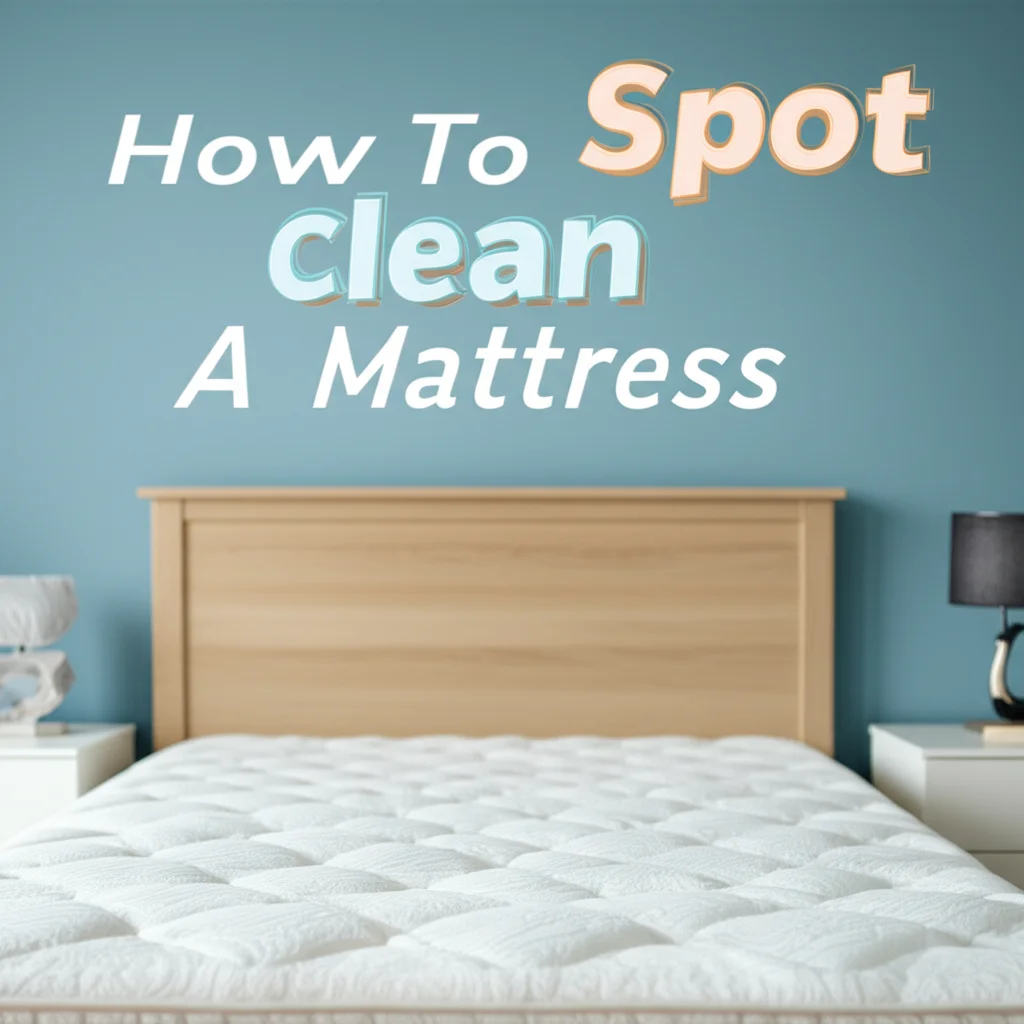· Katria Melrose · Cleaning · 17 min read
Can Vinegar Take Out Beer In Carpet

Can Vinegar Take Out Beer In Carpet? Effective Cleaning Methods
Spilled beer on the carpet is a common household mishap. It leaves a visible stain and an unpleasant smell. Many people wonder if simple household items can fix this. You might be considering using vinegar. It is a popular natural cleaner.
I understand the frustration of a fresh beer spill. Or, perhaps you found an old, dried stain. You want a reliable solution that works. This article explores how vinegar helps with beer stains on carpet. We cover the science behind its cleaning power. We also provide clear, step-by-step instructions. You will learn how to remove fresh and old beer stains. We also discuss how to eliminate the lingering odor. This guide helps you restore your carpet’s clean look and fresh smell.
Takeaway
- Act Fast: Clean beer spills quickly for the best results.
- Blot, Do Not Rub: Always blot the stain to avoid spreading it.
- Vinegar Works: White vinegar effectively breaks down beer stains and neutralizes odors.
- Test First: Always test vinegar on an hidden carpet area before full application.
- Address Odor: Vinegar combined with baking soda is good for removing beer smell.
- Old Stains Need More: Dried stains require a slightly different approach.
- Know Limitations: Some stains might need professional help.
Clear Answer to the Main Query
Yes, white vinegar can take out beer in carpet. Its acidic properties help break down the sugars and proteins in beer, which cause the stain. Vinegar also neutralizes the lingering beer odor. For best results, treat the stain quickly and follow proper cleaning steps.
Understanding Beer Stains and Carpet Fibers
Beer spills often happen suddenly. A party might be in full swing, and a glass tips over. Or, you might drop a bottle while walking through a room. Beer contains sugars, hops, and yeast. These ingredients cause the visible stain. They also lead to the lingering, sour smell. The type of beer can affect the stain. Darker beers, like stouts, leave more noticeable marks. Lighter lagers might seem less severe but can still leave residue.
Carpet fibers play a big role in stain removal. Synthetic carpets, like nylon or polyester, are often more stain-resistant. Wool or natural fiber carpets are more absorbent. They hold onto liquids more readily. This means stains sink deeper into the fibers. Quick action is essential for all carpet types. The longer a beer stain sits, the harder it becomes to remove. The liquid penetrates the fibers and dries. This sets the stain and can trap the odor. Understanding these factors helps you clean more effectively. Treating a stain promptly prevents permanent damage. It also reduces the chance of unpleasant odors.
When beer spills, it immediately begins to absorb. The liquid spreads outward. The sugars in beer become sticky when dry. They attract dirt and dust. This makes the stain look worse over time. Yeast and bacteria in beer can also grow. This contributes to the sour smell. Knowing these details helps you choose the right cleaning method. It also explains why vinegar is such a good option. It addresses both the visible stain and the odor.
The Science Behind Vinegar as a Cleaner
Vinegar is a weak acid. Most household white vinegar contains about 5% acetic acid. This acid is the key to its cleaning power. When applied to a beer stain, vinegar begins to work on the stain’s components. Beer contains proteins, sugars, and often some coloring. Acetic acid reacts with these elements. It helps to break them down. This makes them easier to lift from carpet fibers.
Vinegar also acts as a natural deodorizer. The sour smell of beer comes from fermented yeast and other organic compounds. Vinegar neutralizes these alkaline odors. It does not just mask smells. It changes their chemical structure. This eliminates the odor source. The acetic acid in vinegar evaporates completely. This means the vinegar smell itself will fade. This leaves your carpet smelling fresh. Many people prefer vinegar to harsh chemical cleaners. It is safe for homes with children and pets. It also costs very little.
Vinegar is versatile. It cleans various surfaces. Its gentle acidity makes it good for many cleaning tasks. You might use it to clean glass or floors. Its ability to break down organic matter is why it works well on beer. It helps lift the sticky residue. It also combats the microbial activity that causes odors. This makes it a dual-action cleaner for beer spills. Remember, it is a mild acid. It is generally safe for most carpets. However, always test it first.
Step-by-Step Guide: Using Vinegar to Remove Fresh Beer Stains
A fresh beer stain is easiest to remove. Speed is key here. The faster you act, the less time the beer has to soak into the carpet fibers. I have found this method works well. It saves my carpet from permanent damage.
Here are the steps to follow:
- Blot, Don’t Rub: Grab a clean, dry cloth or paper towels. Press firmly onto the spill. Blot the liquid. Work from the outside of the stain inward. This stops the stain from spreading. Repeat with fresh sections of the cloth until no more liquid transfers. Avoid rubbing, as this pushes the beer deeper into the fibers. It can also damage the carpet pile.
- Prepare the Vinegar Solution: Mix equal parts white vinegar and cold water in a spray bottle or bowl. For example, use one cup of vinegar and one cup of water. Cold water is important. Hot water can set protein stains, making them harder to remove.
- Apply the Solution: Lightly spray or dab the vinegar solution onto the stained area. Do not oversaturate the carpet. The goal is to dampen the stain. Let the solution sit for 5-10 minutes. This gives the vinegar time to break down the beer residue.
- Blot Again: Use another clean, dry cloth to blot the area. Press down firmly. You will see the stain transferring to the cloth. Keep blotting until the stain lifts. Use fresh sections of the cloth as needed.
- Rinse (Optional but Recommended): Dampen a clean cloth with plain cold water. Blot the area to rinse out any remaining vinegar residue. This helps prevent any lingering vinegar smell. You can learn more about how to get vinegar smell out of carpet if it persists.
- Dry the Area: Place several layers of clean, dry towels over the damp spot. Place a heavy object, like a book, on top. Leave it there for a few hours or overnight. The towels absorb remaining moisture. This helps the carpet dry thoroughly. You can also use a fan or open a window to speed up drying.
This method is highly effective for fresh spills. It stops the stain from setting in. This protects your carpet’s appearance. You can also learn about general methods to remove stains from carpet using vinegar.
Tackling Stubborn or Dried Beer Stains with Vinegar
Dried beer stains present a tougher challenge. The sugars have hardened, and the stain has set into the fibers. But vinegar can still help. It might require a bit more effort. I have used this method on older stains with good results. Patience is key when dealing with these.
Here is an enhanced approach for dried stains:
- Scrape Away Any Residue: If there is any dried, crusty residue, gently scrape it off. Use a dull knife or the edge of a spoon. Be careful not to damage the carpet fibers. Vacuum the area after scraping to remove loose particles.
- Pre-treat with Water: Lightly dampen the dried stain with plain cold water. Use a spray bottle or a damp cloth. Let it sit for a few minutes. This helps rehydrate the stain. It prepares the fibers for cleaning.
- Prepare a Stronger Vinegar Solution: For dried stains, a slightly stronger vinegar solution might be necessary. Mix two parts white vinegar with one part cold water. You can also add a small amount of mild dish soap (a few drops per cup of solution). Dish soap helps lift greasy components.
- Apply and Dwell: Apply the solution generously to the dried stain. Make sure the area is thoroughly damp. Let it sit for 15-30 minutes. For very old or stubborn stains, you can let it sit even longer. Check to ensure the carpet color remains unchanged during this process; does vinegar change carpet color is a common concern.
- Blot and Repeat: Blot the stain firmly with a clean, dry cloth. Work from the outside in. You might need to repeat the application and blotting process multiple times. Change to fresh sections of the cloth as the stain transfers. Persistence often pays off with dried stains.
- Consider Baking Soda: For especially stubborn or old stains, a paste of baking soda and vinegar can be useful. Apply the vinegar solution first. Then, sprinkle baking soda directly onto the damp stain. It will fizz. Let this sit for several hours or overnight. Baking soda helps absorb the stain and odor. You can find more details on how vinegar and baking soda remove old stains from carpet.
- Vacuum and Rinse: Once dry, vacuum up the baking soda residue. Then, lightly dampen a clean cloth with plain cold water. Blot the area to rinse any remaining cleaning solution. Follow with dry towels and a heavy object to absorb moisture.
This method requires patience and repeated effort. But it often brings positive results for stains that seemed permanent. It is a good way to clean old stains from carpet.
Eliminating Lingering Beer Odor with Vinegar
Beyond the visible stain, beer spills leave a distinctive, unpleasant odor. This smell can permeate the carpet and the room. Vinegar is an excellent deodorizer. It neutralizes the compounds that cause the sour beer smell. Simply removing the visual stain is not enough. You must also tackle the odor for a truly clean result. I have found this step makes a huge difference.
Here is how to effectively remove beer odor using vinegar:
- Clean the Stain First: Ensure you have already cleaned the visible beer stain using the steps outlined above. Removing the stain first helps expose the odor-causing residues. These residues can be deeper in the carpet fibers.
- Apply a Vinegar-Water Solution: Mix equal parts white vinegar and water. Use a spray bottle. Lightly mist the affected area. Make sure the solution penetrates the fibers where the odor resides. Do not soak the carpet. Just a fine mist is enough.
- Let It Air Dry: Allow the vinegar solution to air dry completely. The acetic acid in vinegar evaporates. It takes the odor-causing molecules with it. The vinegar smell will dissipate as it dries. Open windows or use a fan to improve air circulation. This speeds up the drying process. Good ventilation is also key to getting rid of carpet smell in general.
- Use Baking Soda for Extra Power: For strong or persistent odors, baking soda is an excellent companion to vinegar. Once the vinegar solution has dried, generously sprinkle baking soda over the entire affected area. Baking soda is a natural absorbent. It pulls out odors from carpet fibers.
- Let Baking Soda Sit: Allow the baking soda to sit on the carpet for several hours. For best results, leave it overnight. The longer it sits, the more odor it absorbs. You can even gently brush it into the carpet pile with a soft brush.
- Vacuum Thoroughly: Vacuum up all the baking soda. You might need to make several passes. Ensure all powder is removed. You should notice a significant reduction in the beer smell.
If a faint vinegar smell remains after drying, do not worry. It usually fades within a day or two. If it persists, you can lightly mist the area with plain water and blot. Or, learn more about how to get vinegar smell out of carpet. This two-step process, combining vinegar and baking soda, effectively tackles both fresh and lingering beer odors.
Important Considerations Before Using Vinegar on Your Carpet
While vinegar is a powerful and natural cleaner, it is important to take precautions. Not all carpets react the same way to cleaning agents. I always do a quick test first. This prevents potential damage or discoloration.
Here are key considerations:
- Test in an Inconspicuous Area: Always test the vinegar solution on a hidden part of your carpet first. This could be under a sofa or in a closet. Apply a small amount of the solution. Let it sit for 10-15 minutes. Then, blot it dry. Check for any color changes or damage to the fibers. If the carpet’s color remains stable, you can proceed. This step is critical, especially for older carpets or those with unusual dyes.
- Carpet Material: Most synthetic carpets (nylon, polyester, olefin) are safe for vinegar. Natural fibers, like wool or silk, can be more sensitive. They might react differently to acids. Wool can sometimes be damaged by strong acidic solutions, though diluted vinegar is usually fine. If you have a natural fiber carpet, use a more diluted solution (e.g., 1 part vinegar to 3 parts water) and test extra carefully.
- Dilution is Key: Never use full-strength vinegar on your carpet. Always dilute white vinegar with an equal amount of water. This reduces its acidity. It makes it safer for most carpet materials. Strong concentrations can potentially affect dyes or weaken fibers over time.
- Avoid Over-Saturating: Too much moisture in your carpet can lead to other problems. These include mold growth or damage to the carpet backing. Apply the vinegar solution sparingly. Just dampen the stained area. Do not soak it. Blotting is better than pouring.
- Ventilation: Ensure the room is well-ventilated during and after cleaning. Open windows or use fans. This helps the carpet dry faster. It also dissipates any temporary vinegar smell.
- The Vinegar Smell: While vinegar neutralizes beer odor, it leaves its own temporary scent. This smell typically fades as the carpet dries. If it bothers you, baking soda can help absorb it. You can also sprinkle a carpet freshener after the area is dry.
By following these precautions, you increase your chances of successful stain removal. You also protect your carpet from harm. This ensures your DIY cleaning is both effective and safe. These tips also apply when you want to clean spots on carpet generally.
When Vinegar Alone Is Not Enough: Alternative Solutions and Professional Help
Sometimes, even with the best efforts, vinegar might not completely remove a stubborn beer stain or odor. This can happen with very old stains, dark beer spills, or delicate carpet types. Do not despair. Other options are available. I have learned to recognize when it is time to try something different.
Here are alternative solutions and when to consider professional help:
- Enzyme Cleaners: These cleaners contain special enzymes. These enzymes break down organic matter like proteins, fats, and starches. Beer stains are organic. Enzyme cleaners are highly effective on these types of stains. They are also excellent for neutralizing odors. You can find them at pet supply stores or general cleaning aisles. Follow the product instructions carefully. They often require a dwell time to work.
- Commercial Carpet Spot Removers: Many companies make specific carpet stain removers. Look for products designed for organic stains or pet stains. These often contain stronger chemicals than vinegar. Read the label to ensure they are safe for your carpet type. Always test these products in a hidden area first.
- Hydrogen Peroxide (Use with Caution): For very light-colored or white carpets, a diluted hydrogen peroxide solution can tackle tough stains. Mix one part 3% hydrogen peroxide with two parts water. Always test this solution first. Hydrogen peroxide can bleach colors. It should never be used on dark carpets. Apply, let sit for a few minutes, then blot.
- Club Soda: Club soda is a mild, effervescent cleaner. It can help lift fresh beer stains due to its carbonation. Blot the stain with club soda. Then blot with a dry cloth. It is a good first response if vinegar is not immediately available.
- Steam Cleaning (For Deep Cleaning): If the stain is large or has soaked deep into the padding, a steam cleaner can help. You can rent a steam cleaner or hire a professional service. Steam cleaners use hot water and cleaning solutions to extract stains. This method is good for a whole room, not just a spot. For more general carpet care, you might also consider how to deep clean carpet without a machine.
- Professional Carpet Cleaning: If the stain persists after multiple DIY attempts, professional help is the best option. Professionals have specialized equipment and stronger cleaning agents. They can often remove stains that home methods cannot. They also understand different carpet materials. This ensures your carpet is cleaned safely.
Knowing when to escalate your cleaning efforts is important. Trying too many different harsh chemicals can harm your carpet. If the stain is too large, too old, or your carpet is valuable, it is best to consult a professional.
Frequently Asked Questions
Does vinegar fully remove all beer stains?
Vinegar is highly effective for fresh and many dried beer stains. Its acidic nature breaks down the sugars and proteins. However, very old, dark beer stains, or stains on delicate carpet types may not be fully removed by vinegar alone. Prompt action and proper technique improve success rates.
Is white vinegar safe for all carpet types?
White vinegar is generally safe for most synthetic carpets like nylon and polyester. For natural fibers like wool or silk, use a more diluted solution and test in an inconspicuous area first. Strong, undiluted vinegar can potentially cause discoloration or damage on sensitive materials.
How do I get the vinegar smell out of my carpet?
The vinegar smell usually dissipates as the carpet dries. To speed this up, ensure good ventilation by opening windows or using a fan. Sprinkling baking soda over the dry, treated area and vacuuming it up after several hours can also help absorb any lingering vinegar odor.
Can I use apple cider vinegar instead of white vinegar?
It is best to use white vinegar for carpet cleaning. Apple cider vinegar can leave a brownish tint on light-colored carpets due to its natural color. White vinegar is clear and has the necessary acetic acid without the risk of additional staining.
What if the beer stain is very old?
Very old beer stains are harder to remove as they have set deeply into the fibers. You will likely need to rehydrate the stain with water first. Then, use a stronger vinegar solution, potentially with a few drops of dish soap, and allow a longer dwell time. Combining vinegar with baking soda is also beneficial for old stains.
Should I use hot or cold water?
Always use cold water when dealing with beer stains. Hot water can set protein-based stains, making them much more difficult to remove. Cold water helps to loosen the stain without bonding it to the carpet fibers.
Conclusion
A beer spill on your carpet is definitely frustrating. But you now know that [can vinegar take out beer in carpet] is a question with a positive answer. White vinegar is a remarkably effective, natural, and affordable solution. Its acidic properties break down beer stains. It also neutralizes those lingering, unpleasant odors. I have personally relied on this method many times.
Remember, speed is crucial for fresh spills. Blot the stain promptly. Then, apply a simple solution of diluted white vinegar. For stubborn or dried stains, a slightly stronger approach with a bit more patience and possibly baking soda will work wonders. Always perform a patch test first. This ensures your carpet’s color and texture stay safe. While vinegar is powerful, know when to consider professional help for very persistent stains. With these tips, you can confidently tackle beer spills. You will restore your carpet’s freshness and cleanliness. Take action now and reclaim your spotless home!





